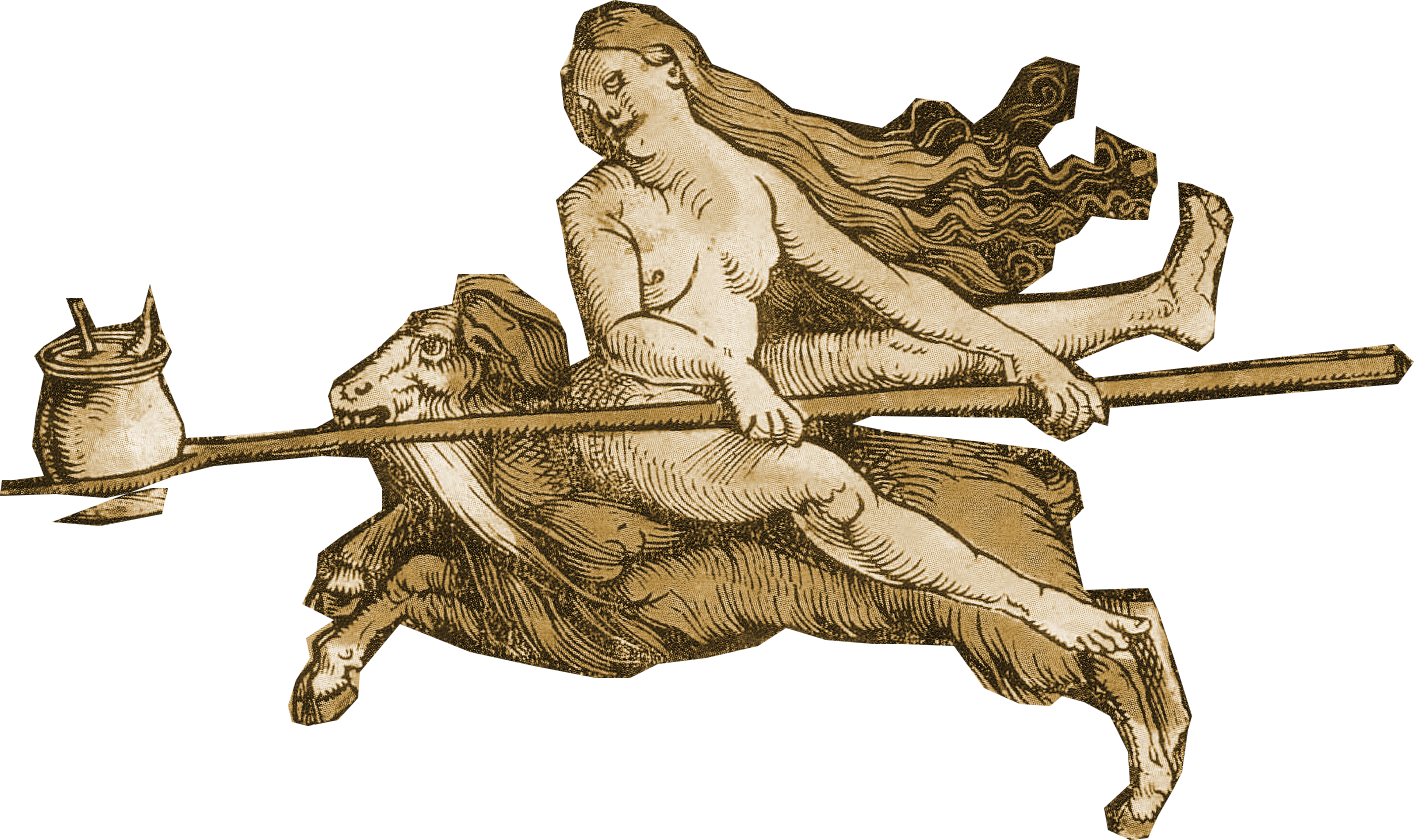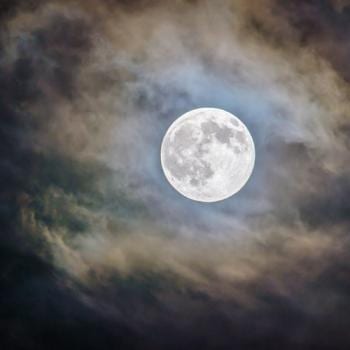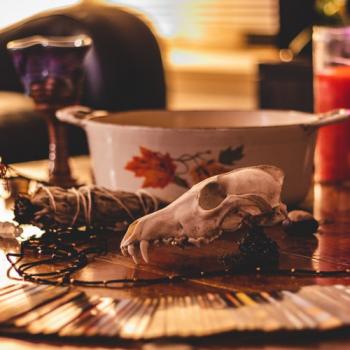Back when I first started learning about Witchcraft I remember coming across the concept of flying ointment. According to the books I read, this was a nasty concoction made by Witches, typically from poisonous herbs and other macabre sundries such as baby’s fat. When a Witch wanted to fly off to the Sabbat, all she had to do was rub herself down with this magical ointment and away she’d go. But I was assured that these ointments were simply products of Witch Trial era hysteria and had no use in modern Witchcraft.
Clearly things have changed since then.
With the increasing popularity of Traditional Witchcraft, there has simultaneously been a growing fascination with flying ointments. More and more is being written about them in terms of their use as a legitimate practice within Witchcraft, both historically and in modernity. Furthermore, these mixtures are now being widely praised for their ability to powerfully facilitate spirit-flight. Thus, it is no surprise that many people are being drawn to employing it in their own practice, including me.
As spirit-flight plays a big role in my practice, I naturally found an entheogenic salve very appealing. I debated about it for a long time but after a lot of consideration I finally decided that it was something I wanted to pursue. It was then that I, like everyone else, was faced with the decision of either buying a premade ointment or crafting my own.
Both options require a great amount of research, knowledge, and responsibility, however this is especially true if you plan on making your own. First, you need to know what herbs to use, or have been used in the case of buying a premade ointment. Watch out for herbs that you could have an adverse reaction to, such as if you allergies, heart complications, or are pregnant/breast feeding. Similarly watch out for any possible dangerous interactions between herbs. Second, you need to know about dosages both in terms of the dose of herbs in the ointment as well as how much of the final product to apply to your body. This is dependent on many things including your body type. These are but a few examples of what needs to be carefully considered and researched before using/making flying ointment.
The recipes for flying ointment vary greatly, but many contain herbs that are poisonous. In order to handle these herbs safely and effectively, one needs to undergo proper training. Unfortunately, many people don’t seem to understand the importance of this, believing that because they have done a few internet searches that they are qualified. But just as reading a few WebMD articles doesn’t make one a doctor, neither does reading a few articles about herbs make one an herbalist.

This brings me to an important point which is that you don’t need to use potentially deadly ingredients if you want to make/use flying ointment. While recipes many do contain traditional poisonous herbs such as Belladonna, Datura, and Henbane, this is not a requirement. Many ointments make use of herbs that are less-toxic but still have entheogenic properties (i.e. Mugwort and Wormwood). Even still, some ointments contain no narcotic or psychoactive ingredients and instead rely on the plants’ magical properties (although these ointments may only prove to be effective to their creators).
I’d also like to point out that just because an ingredient was used in traditional recipes from folklore, doesn’t mean that it should be used. First, we don’t know for sure if a lot of these ointments were actually used. Second, because of modern medical science, we know that some of these ingredients are better left alone. Take for example Monkshood: a traditional herb found in many folkloric ointment recipes. We know today that Monkshood is extremely toxic, so much so that it is doesn’t even need to be ingested to kill you. It’s toxin, aconitine, is easily absorbed through the skin quickly leading to paralysis of the heart and repository system as well as death shortly thereafter. Finally, I’d just like to say that if you’re using an ingredient simply because it’s “traditional,” remember that rendered baby’s fat was also used traditionally but we (hopefully) know better than to use that.
All that being said, I completely understand the desire to make one’s own flying ointment. There is a lot to be said about making your own tools in Witchcraft. The process of mixing herbs, infusing oils, melting the beeswax, and stirring it all together is extremely visceral. All the smells and textures work together to conjure a potent magic. At every step along the way you put your own essence and intentions into the product. This is something you sadly miss out on when you buy something premade.
I knew that if I was going to start using flying ointment that I wanted to make it myself. However, right away I recognized that when it comes to using those poisonous herbs often cited in recipes, I am in no way qualified. Rather than letting that deter me, I decided to come up with my own recipe that would be less-toxic and can be used by those who either are not trained to use poisonous plants or don’t feel comfortable doing so.
My goal then was to find herbs that would have some type of entheogenic effect but wouldn’t accidentally kill me. I underwent a long process of studying and after about a year I finally compiled a list of six key ingredients: Cinquefoil, Balm of Gilead, Dittany of Crete, Wormwood, Mugwort, and Clary Sage. All of these herbs are known for their magical ability to aid in soul-flight and spirit work as well as induce, strengthen, and clarify visions. Additionally, Dittany, Wormwood, Mugwort, and Clary Sage all have the entheogenic properties I was looking for.

To create the ointment, I infuse the herbs in oil for a minimum of three moon cycles. Typically, I will either go by the full or new moon as these are times associated with the Witches’ Sabbath. If I’m feeling particularly ambitious I may go by planetary days and hours, either using Mercury for its association with travel or Saturn for its association with the darker ways. After the three moon cycles have passed, I will strain the herbs out of the oil. Finally adding about 2/3 oil to about 1/3 melted beeswax.
*Note that I don’t give specific dosages of herbs, if you plan on following this recipe please do your own research and figure out what it right for you. Additionally, I use olive oil for the carrier oil and beeswax for the base but you can experiment with other options. Many people use animal lard, especially pig’s lard, as it absorbs easily into the skin. I personally couldn’t stomach this, so I opted for beeswax.
When I am ready to use the ointment, about a half hour to an hour before ritual I will rub a small amount (it’s important to start small and work your way up) on my wrists and temples. Sometimes I will apply it to my armpits, third-eye, over my heart, or on the soles of my feet. It’s up to you where you rub your ointment, however it needs to be said that flying ointment should never be applied to your genitals or mucous membranes. The idea that Witches applied ointment to these regions, whether with the aid of broomsticks or by hand is purely myth.
With my formula, I notice quite quickly that I become deeply focused, yet my mind is still and silent. As time progresses, my spirit begins to feel lifted and pulled away from my body. When I lay down, my body is deeply relaxed and feels almost non-existent. Of course, experiences will differ between individuals due to differences in body, dosage, and even things like personal belief. So while one person may feel something really intense, another may simply feel slightly euphoric. I’ve found that the effects of the ointment can last a few hours, but washing any remaining residue off with soap and water can help nullify the potency post-ritual. Typically, I go straight to bed after my rituals and by morning I feel normal.
….
This article is really only a brief overview of flying ointment and I implore readers to seek out additional resources. As always, be critical, check facts, and ask questions. Remember that there are many ways to approach flying ointment, so make sure to take into consideration your level of experience and comfort. If you aren’t a trained herbalist or are uncomfortable using poisonous ingredients, look into alternative recipes such as the one I laid out above. However, always check for any possible adverse reactions and know what dosages are right for you.
If approached with knowledge and responsibility, flying ointment can be safely used by just about anyone. So do your research and enjoy!












